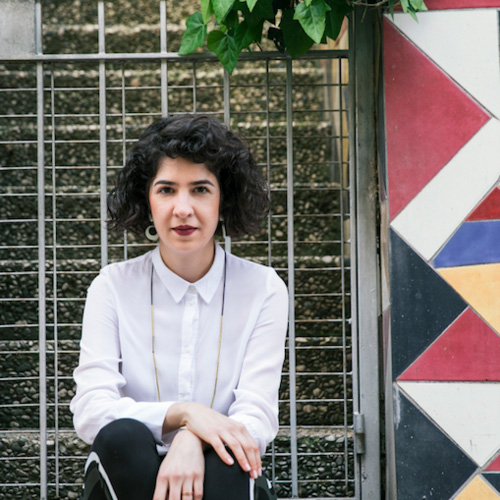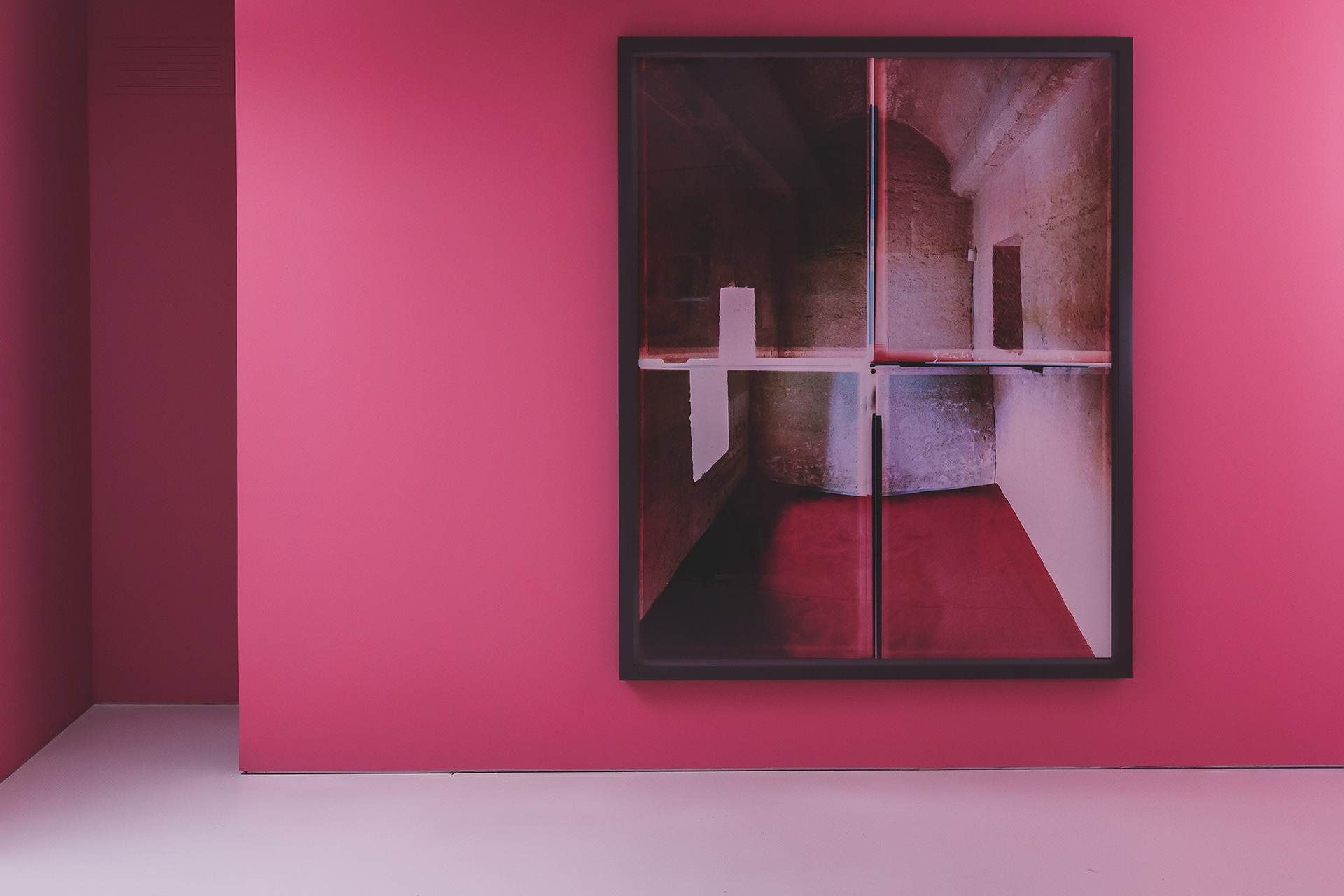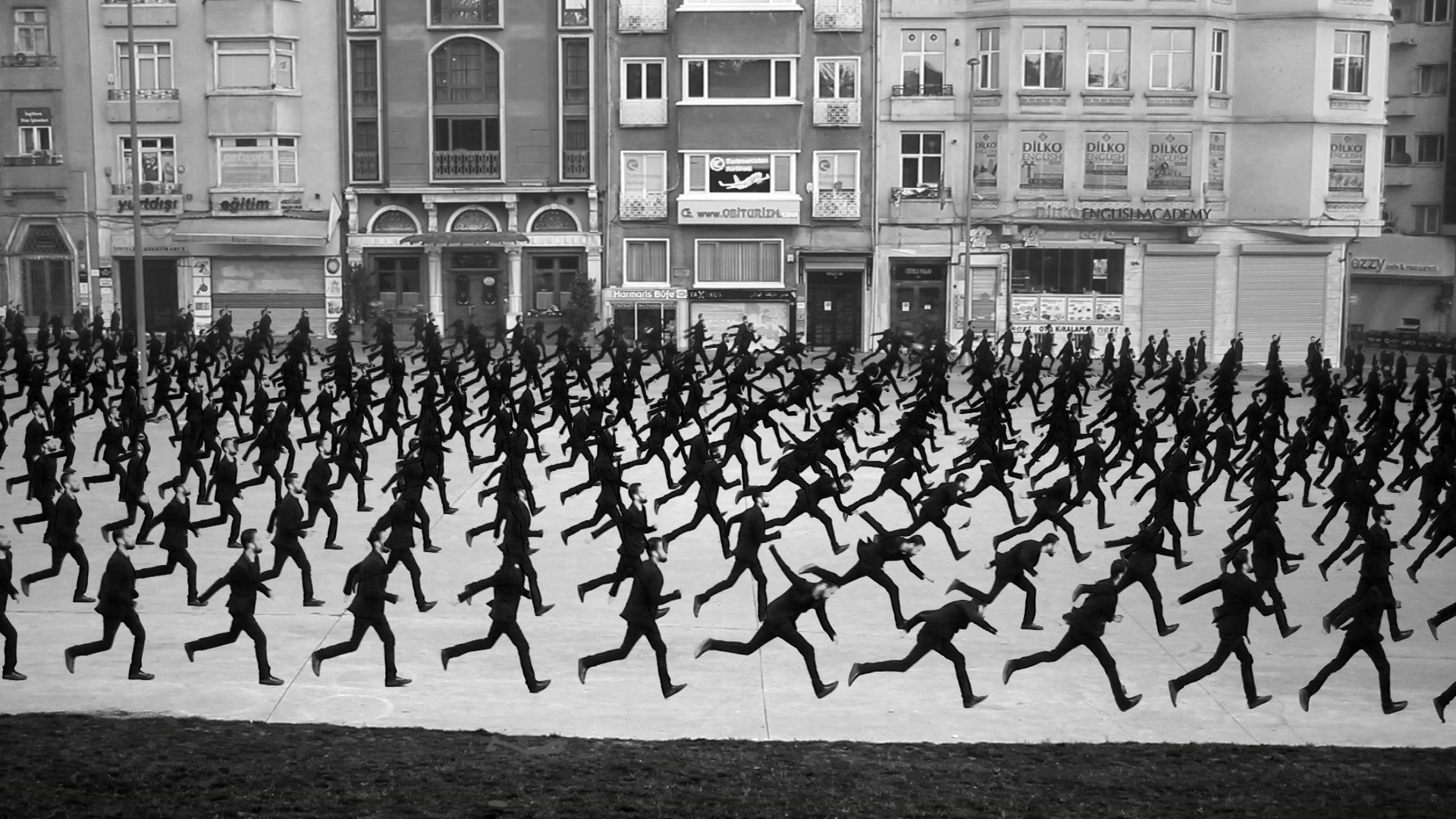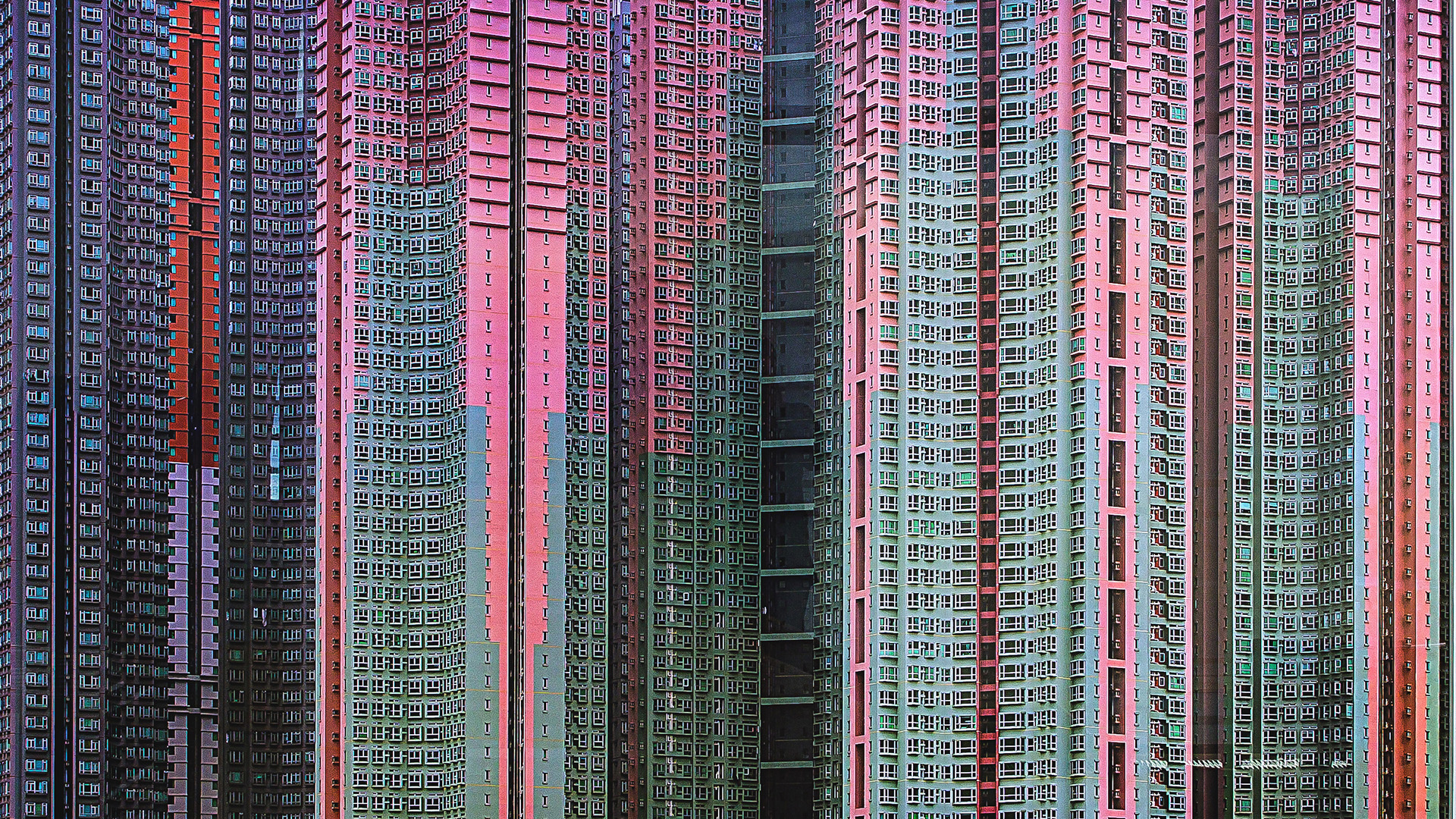Blog
An Interview with Ola Kolehmainen on the Sinan Project
25 May 2021 Tue

NAZ CUGUOĞLU
nazcuguoglu@gmail.com
Naz Cuguoğlu: You visited Istanbul multiple times between 2012 and 2014 for Sinan Project, studying Mimar Sinan’s works as a Kulturakademie Tarabya scholar. Can you tell us about your research process? Which buildings did you study? What did you learn? Were there any surprises?
Ola Kolehmainen: I got an invitation from the Goethe Institute to come to Istanbul in 2011 as a Kulturakademie Tarabya scholar. During this visit, Borusan Contemporary invited me to work on a commissioned project focusing on architectural buildings by Mimar Sinan. In spring 2013 I came back to Istanbul and visited mosques by the architect. I then realized that I needed a trip to study his works more thoroughly. During this trip, I had meetings with Sinan scholars, and they made a list of buildings for me to visit. I studied Sinan’s tradition of architecture, which was influenced by the legacies of Byzantine and Roman Empires. Unfortunately, there are not so many historical texts on Sinan. For the Sinan Project, I decided to include all of the Byzantine churches in Istanbul. I also wanted to photograph the Pantheon in Rome because it is one of the oldest buildings still in operation. I intended to point out the relationship between Pantheon and Hagia Sophia. They wanted the diameter of the cupola to be larger in Hagia Sophia. I'm interested in these stories; they can be facts or fiction—as there are many examples in which fiction turns out to be facts. This project changed my artistic professional life completely.
NC: During this time, you shifted focus from modern architecture to historical architecture. Your focus on traditional minimalism turned into an interest in space, light and color. Can you elaborate on this shift, and what kind of new doors and possibilities it opened for your practice?
OK: My work has always been based on the relation between light, space, and color, which I have found in architecture. When doing the so-called minimalistic or the classical works, the space is not so deep or really three-dimensional. Still, it has always been involved because I'm in situ, working with the building. I have a spatial relationship with the building, which is not always visible in the works, but on another level, it is present. In Istanbul, I realized that I had to adopt a completely different approach. When you go to a building designed by Sinan, it's this huge mono space. He was following the old architectural tradition in which they have a rather small door, and then, when you come in, it is this enormous space. I wanted to capture that feeling. I also worked with diptychs and triptychs before, but they were always horizontal. This was the first time I started to divide the space, vertically and horizontally. I was working with two or three buildings simultaneously. In the morning I would go to Suleymaniye Mosque, then in the afternoon I would go to Hagia Sophia, and the next day I would change the order. In the beginning of October, I realized that the light was coming quite low. This would not be the casein the summertime. Through this light I could then work with the space by approaching it from multiple views. This multiple-view approach requires the viewer to look at the work from a certain distance. You get a sense of the space if you are two, three meters away. You can sense the three-dimensionality of the mosque. This is what I wanted to capture.

Ola Kolehmainen, Selimiye 1575 III, 2014,
235 x 188 cm., quadriptych, C-print.
Installation view from the "Ola Kolehmainen: Sinan Project" exhibition, 2017.
NC: Using polyptychs in these works, you dissect the architectural components and remake visual collages of them with your own interpretation. This almost creates a feeling of a leap of time and space.
OK: The notion of time has not been this evident in my work before. That was an element that appeared later. Soon after I started to grasp this new language, I gained the ability to modify the lights while I was shooting. It actually takes a long time to make one image. One exposure takes almost an hour and a half. Through this very slow process, I started to study the light much better and understood the importance of being there in the wintertime. I was lucky that it was a very sunny winter. The understanding of light and using multiple exposures was completely new for me because I did everything analog in the very beginning but then it shifted to digital.
NC: How did you make that decision?
OK: Normally I expose about 200 films in a year and in Istanbul it was 1,200 sheets. I had over 10,000 study images of the trip. I started to amass this huge amount of material, and I had brought a scanner and a light table, hence a mini studio. But there was no time to start to scan, as scanning one film takes about twenty minutes. There was a film laboratory in Sirkeci that I worked with. When I got back to Berlin, I had 1,200 negatives to be scanned. It took me seven months to prepare them for the demo. The whole project took fourteen months.
NC: That sounds like a very intense process. I'm also interested to hear more about what you learned about Sinan and his architectural approach, because as you said, there is not much historical material.
OK: Not so much. There's a book by Elif Safak about Sinan which I can suggest, titled The Architect's Apprentice. I was mostly surprised to learn about his amazing capacity to work. He made 84 mosques and there are almost 400 buildings where he was involved.
NC: And you were kind of echoing that intense working ritual with your approach to your own practice, taking pictures every day.
OK: In a way, yes. It was nice to see how his architectural approach to Hagia Sophia influenced other mosques, such as Selimiye Mosque in Edirne. I was in Edirne for seven days because it was early February, and I definitely needed the sunlight. I waited for the sun to come, visiting the mosque every day. On the last days, it was sunny, and the mosque really came alive. I could see how it was structured in the same way as Hagia Sophia: one big wall with windows and the light coming in.
NC: His architectural approach sounds similar to how the camera functions in a way as it depends on the light.
OK: Yes, he comes from the tradition of church buildings where the windows were placed in a certain way to create a certain type of atmosphere. Early churches built before Hagia Sophia were much smaller. The aim was to show the church goers the divine light and make it into this great abnormal space. Even in the early times of Christianity, buildings and the light were used to enhance the spiritual experience. This sensational use of light was applied to the huge scale of Hagia Sophia, inspiring Sinan to develop it further.
NC: What are you working on these days? I wonder if we can see the effect of this body of work on your current projects.
OK: There's a very clear path set by the Istanbul works actually. I worked on an exhibition afterwards that would not have happened if I did not have the commission from Borusan. I was invited to make an exhibition at the Helsinki Art Museum. When doing research on Sinan and his tradition, I realized that Michelangelo and Palladio followed the same tradition as architects. They all lived and worked around the same time, but never met. Sinan never traveled East or West, only North and South. He went from Jerusalem to Sofia. I made a fictional exhibition with these three architects meeting. I already had examples of Islamic and Christian architecture and decided to also include examples from Judaism. Focusing on three Abrahamic religions, I wanted to make an exhibition about sacred places. I photographed Byzantine churches in Italy, then various synagogues and other historically important churches, such as St. Peter's Basilica.
NC: And you are sitting in a room full of mirrors at the moment. Can you tell us more about this room?
OK: I worked with a photography archive in Cologne which has 25,000 glass plates. They have negatives from the period between 1855 and 1945. 1855 was really the very early stages for the glass plates. I worked with the archive for five years and where I'm sitting now is one of the works that was created during this process. This is a standing structure which has drawings of Cologne outside and its mirrored inside has many meanings. You could think of it as a confessional booth, like in Catholicism.
NC: What did these architectural photographs of the city reveal to you?
OK: Historically, Cologne was a Roman colony. One of the first churches was built there around 800, in fully Byzantine style. Unfortunately, during the war all these churches were bombed and the mosaics were destroyed. There are some old glass plates where you could see the mosaics. Of course, they are black and white. I continued to work following the same method I used in Istanbul, making sections and then developing the work rephotographing my own negatives. That trip definitely changed the current work I'm doing—it was like opening the floodgates.
NC: Did the pandemic affect your practice in any way? Nowadays one cannot really work in archives and our access to indoor public spaces is limited...
OK: Not really. Two years ago, I moved my studio to my house and turned one room into an archive room. I already had my library here. At the beginning I was a little bit scared about not separating life from work, but that has not been my experience at all. I started to work on an exhibition project last September, a few months before COVID-19. I used only my own archive of old negatives. I started to rephotograph them, making them digitally analog in the process, like a mixed media using photography. Working here at my studio, in a way I was prepared.
ABOUT THE WRITER
Naz Cuguoğlu is a curator and art writer, based in San Francisco and Istanbul. She is the co-founder of Collective Çukurcuma. She held various positions at KADIST, The Wattis Institute, de Young Museum, SFMOMA Public Knowledge, Joan Mitchell Foundation, Zilberman Gallery, Maumau Art Residency, and Mixer. Her writings have been featured in SFMOMA Open Space, Art Asia Pacific, Hyperallergic, Nka: Journal of Contemporary African Art, M-est.org, and elsewhere. She received her BA in Psychology and MA in Social Psychology, both from Koç University, and another MA from California College of the Arts’ Curatorial Practice program. She has curated exhibitions internationally, at institutions such as the Wattis Institute (San Francisco), 15th Istanbul Biennial Public Program, Framer Framed (Amsterdam), Kunstraum Leipzig, Red Bull Art Around Istanbul, 5533 among many others. She co-edited three books: After Alexandria, the Flood (2015); Between Places (2016); and The Word for World is Forest (2020).



